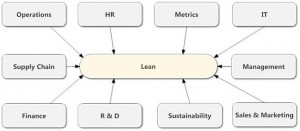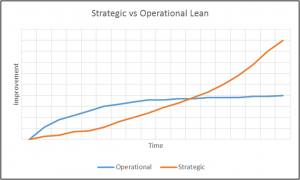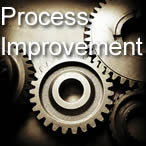LEAN Misconceptions – Operational Issues
LEAN Misconceptions – Part 4
The Lean Philosophy has been around for many years, but unfortunately it is not always understood, predominantly because Lean is thought to be:
- A cost reduction exercise
- A process to reduce the number of employees
- Only applicable to ‘manufacturing’ organisations
- An ‘operational’ issue that can be solved by the ‘operations people’
- Only for ‘big’ organisations.
Nothing could be further from the truth!
In this series of articles, I will discuss each of these misconceptions and demonstrate that Lean is about business; any and every business. A Lean business strives to understand what the customer really values, and then maximises customer value. Lean is not a short-term fad, but a long-term commitment towards continual improvement that involves every system, every process, every department and every employee within the organisation, irrespective of it’s size.
Misconception # 4: Lean is an ‘operational’ issue that can be solved by ‘operations people’
Largely due to the fact that Lean “grew up” in the manufacturing industry (see Lean Misconception #3), there is still a strong belief by many managers and business owners that Lean is an ‘operational’ issue that can be solved by the ‘operations people’…..nothing could be further from the truth.
In very broad terms, Lean consists of two components….. technical and strategic, often referred to as the ‘hard’ and ‘soft’ sides of Lean. Firstly the technical side.
Lean uses a number of tools and techniques to identify waste and then make process improvements, where these tools typically include:
- Value Stream Mapping – current state & future state
- Facility or workplace layout design (factory, office, warehouse, operating theatre etc)
- Level Flow & Standardisation
- Setup time reduction
- Pull systems
- Visual measurement systems
- Total Productive Maintenance
- Error or Mistake Proofing
- Total Quality Management
- 5S
These tools and techniques are generally easy to learn and can deliver significant benefits within a very short period of time, a good example being workplace layout design. By analysing the physical layout of any workplace, one can usually make quick changes that have a dramatic impact on operational efficiency, for e.g. moving workstations closer together, changing the location of printers, inventory, or other shared services. Operational people ‘love’ these Lean tools as they can quickly implement process changes to improve throughput while simultaneously reducing inventory and operational expenses. Technical solutions fit well into the gambit of operations people as they are objective and straightforward…. this is what they do! Companies will often train people to use these Lean tools as they become invaluable in diagnosing and improving operational processes.
Strategic Lean on the other hand, encompasses a holistic approach to implement Lean. First and foremost, the Lean initiative is driven by the owner or managing director who then ensures that all employees and departments are ‘part of the program’ (figure 1).
Strategic Lean leaders understand that the entire organisation is involved and that in order to make lasting and permanent improvements, the culture of the business must change….Lean thinking must become ‘ingrained’ in the organisation or put another way ”Lean is the way we do things here”. Changing the culture of any organisation is not a quick-fix as it takes time to change old behaviours, and any such change must start with the owner or MD. By definition, this means that process improvements through strategic Lean take more time to become effective, but once this cultural change has taken effect, Lean becomes sustainable and improvements permanent.
Unfortunately, some organisations rush to implement the tools without considering the strategic or cultural aspect, which then results in “initiative fatigue” as managers move on to other projects. Without the sustainable strategic (cultural) component, technical Lean improvements fizzle out as the program is unsustainable (figure 2).
Lean is not an operational issue that can be handed to the ‘operations people’. To create a sustainable Lean culture, a holistic or strategic approach is essential.
Mike Karle

















